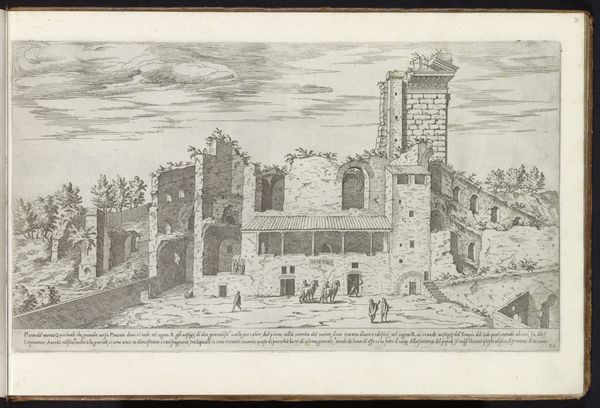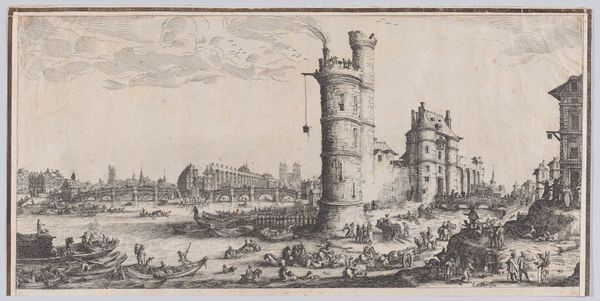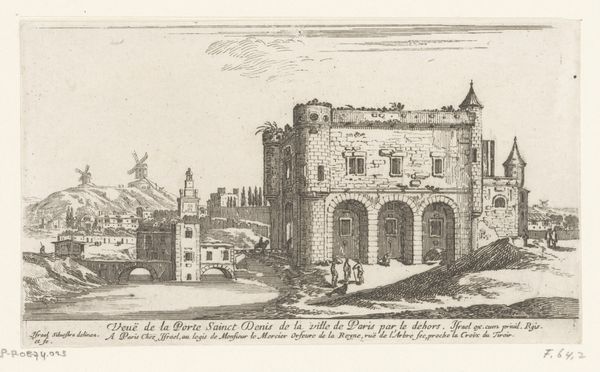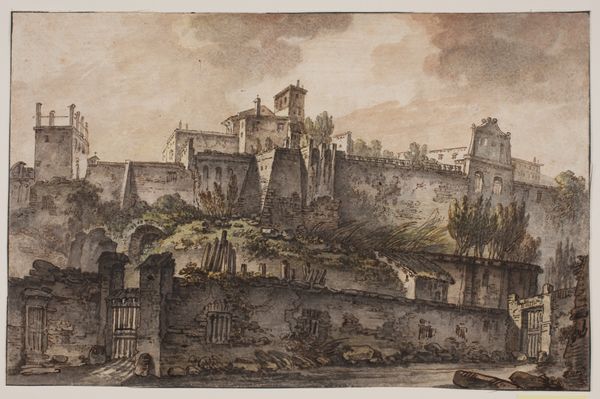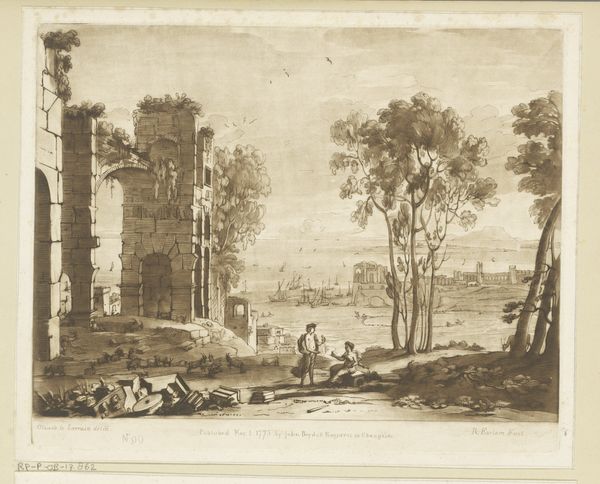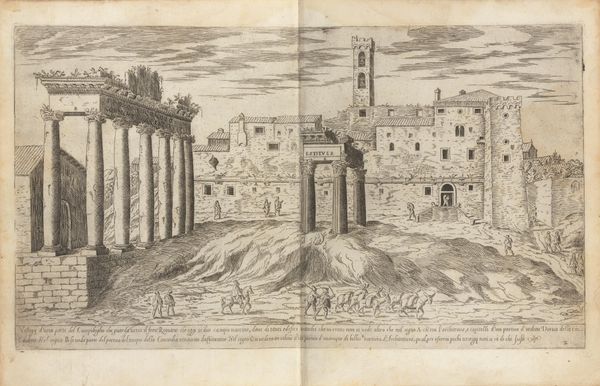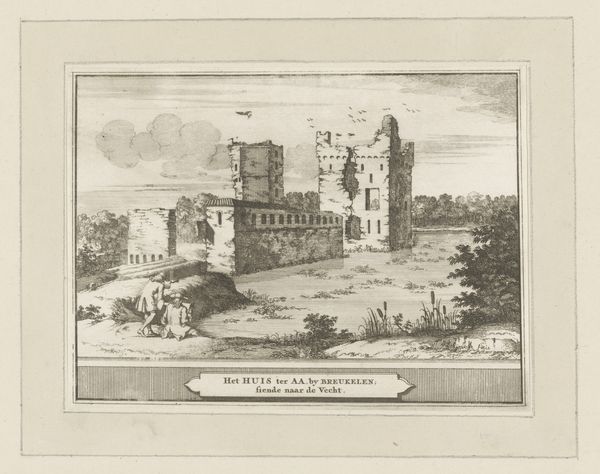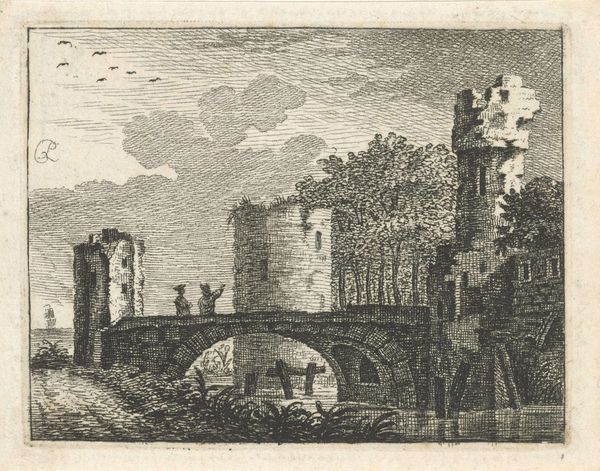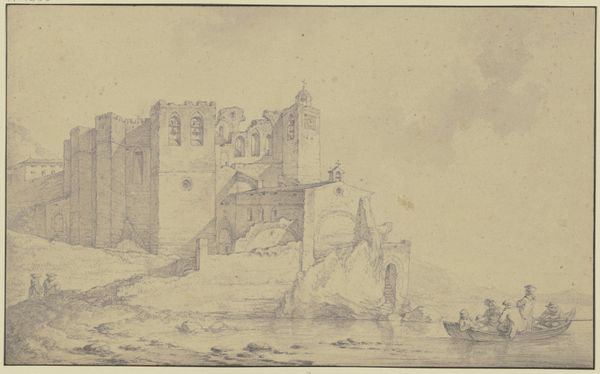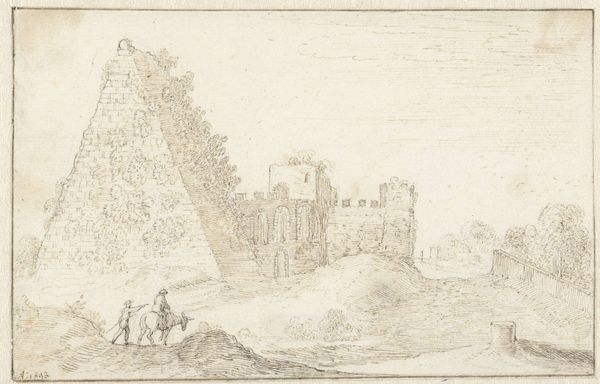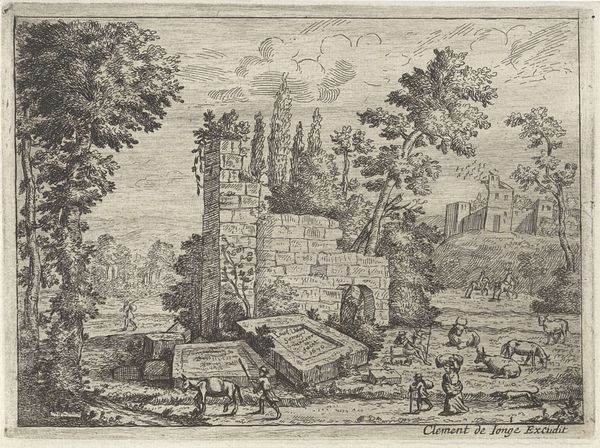
drawing, ink, pen
#
drawing
#
landscape
#
oil painting
#
ink
#
coloured pencil
#
15_18th-century
#
pen
#
cityscape
Dimensions: 12 7/16 x 22 1/8 in. (31.6 x 56.2 cm)
Copyright: Public Domain
Editor: This is Canaletto's "Warwick Castle: The East Front," created in 1752 using pen, ink, and wash on paper. It strikes me as quite different from many landscape paintings of the time; there's a level of detail in the castle's construction that's almost architectural. What can you tell me about Canaletto's focus in this piece? Curator: Well, consider the labor involved in not just depicting this scene but *making* the drawing itself. Canaletto, famous for his Venetian cityscapes, approached this subject methodically. Pen, ink, and wash – relatively inexpensive materials – became tools to capture and, crucially, to *market* this image of aristocratic power to a wider audience. Notice the figures in the foreground? They become almost decorative, elements in the consumption of a grand vista. Editor: So, you're saying the materials and the production methods weren't just about artistic expression, but about accessibility and audience? It makes me wonder, how much of the labor cost went into creating similar landscape drawings at that time? Curator: Exactly. And think about the division of labor potentially involved; did Canaletto prepare the initial sketch himself, or rely on assistants? These drawings, reproduced as prints, disseminated images of power and property, turning landscapes into commodities. This wasn't just *about* Warwick Castle; it was *for* the consumption and social advancement of a certain class. What happens when architecture shifts from a social good to a commodity, what type of labour relations does this impact, and does it change what it means to enjoy nature? Editor: I see, it’s not simply a representation of a castle; it is part of the 18th-century visual economy and reflects labour concerns. This conversation helped me to examine more the conditions of artistic production that shape our perspective when assessing visual compositions. Curator: Indeed, examining materiality allows us to unpack the complex interplay of art, labor, and social power within its historical context.
Comments
No comments
Be the first to comment and join the conversation on the ultimate creative platform.
